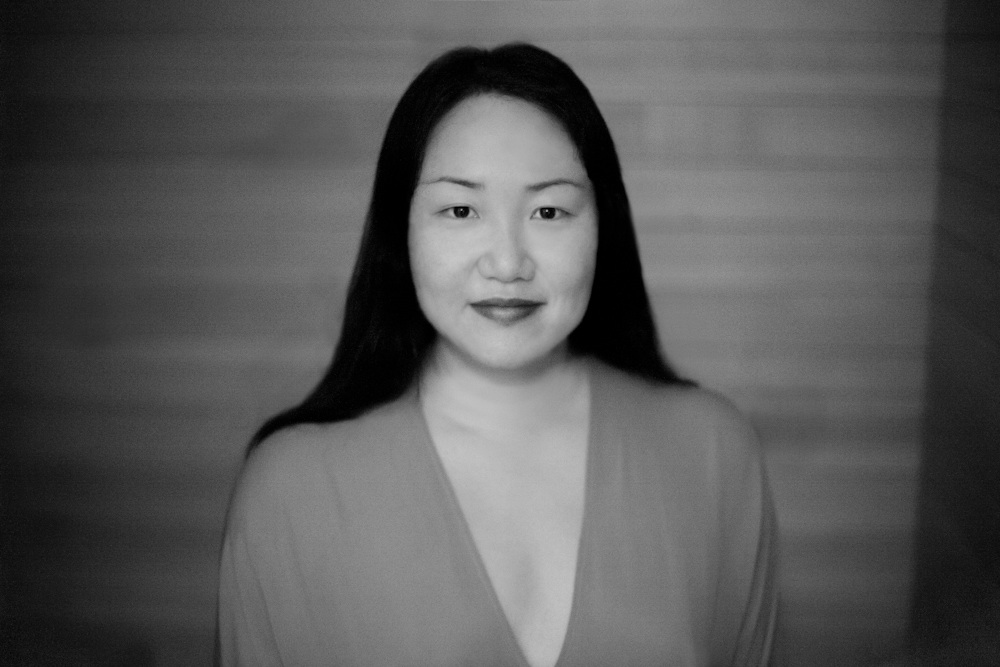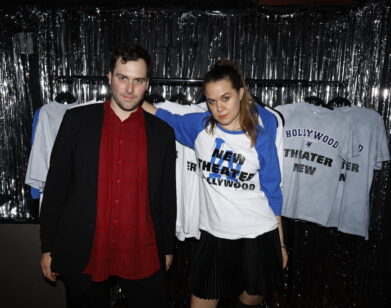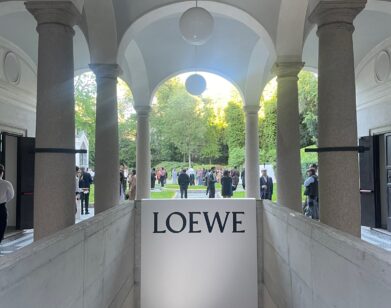The Science of Immortality

ABOVE: HANYA YANAGIHARA
Hanya Yanagihara’s astonishing first novel, The People in the Trees, is a pharmaceutical-age fable about extraordinary success punctuated by terrible downfall. Although it reads like an H. Rider Haggard-esque expedition through a lost Eden, thematically, it’s a meditation on the toxic effects of greed upon our psyches and our environment. It’s also a riveting, graphic, and deeply ominous examination of moral relativism. If a great man does unspeakable things, Yanagihara wonders, is he still a great man? In lieu of any clear, easy answers, she offers a saga brimming with as much menace as epiphany.
The plot is framed as a memoir by Norton Perina, a Nobel prize-winning scientist who is convicted of pedophilia toward the end of an illustrious career. The effect of seeing through his eyes is as haunting (and disorienting) as it is utterly enthralling. Perina and his team stumble upon a lost tribe living on the Melanesian island of Ivu’ivu. Eating the indigenous turtles’ meat allows them to live forever—with some distressing side effects. Perina’s discovery sets off a big pharma frenzy, destroying the idyllic wilderness and ushering in the usual ravages of colonialism. Perhaps to atone for the transformations he’s wrought, Perreira starts adopting local children, eventually amassing a brood of 43 kids. The story opens with newspaper reports of him being found guilty of raping at least one of them. Yanagihara doesn’t shy away from raising some difficult—if not impossible—questions. The People in the Trees suggests that, even if science can’t provide all the answers, it can at least help us identify which sorts of questions to ask.
ADAM LEITH GOLLNER: I read your book over the past week. I loved it—it’s fantastically gripping.
HANYA YANAGIHARA: Thank you. It is always sort of unnerving to hear from people who’ve read it. I’m not reading any of the reviews and most of my friends haven’t read it—they bought it, which is all I frankly care about, but they haven’t read it.
GOLLNER: I know. There’s something terrible about knowing that people are reading your book.
YANAGIHARA: [laughs] Yeah, I’d rather them just not read it because then I wonder, “If they’re reading it, why I haven’t heard anything from them?” It’s a horrible, slippery slope.
GOLLNER: There’s this silence after the book first comes out when people are reading the book. Your book is in that moment.
YANAGIHARA: You just published The Book of Immortality as well, right?
GOLLNER: It came out few weeks ago, yes.
YANAGIHARA: So you’re in the lag.
GOLLNER: Yes, I’m in the lag too. I know that whenever somebody says they’ve read my book, I feel this urge to turn and walk away. They inevitably have good things to say about it—nobody grabs you by the collar and yells, “How dare you?” But I’m always worried that they will.
Hanya, I have to say I was thrilled to see that your book explores so many of the same themes that I was preoccupied with while writing The Book of Immortality: the limits of science; the age-old and all too human quest for something greater; the nature of human nature itself. You also clearly have an affinity for eccentric characters.
YANAGIHARA: The big characters who occupy science, especially modern science, are all “off” in fundamental ways. I don’t think that genius goes hand in hand with being socially inept or being a sociopath or being a misanthrope, but I do think that it is a mind that can think so differently—so beyond how one is supposed to think. I wanted to pay tribute to that mind. I also wanted to write about the time when science became modern, around the 1950s. Right after [physicist J. Robert] Oppenheimer, science started being so politicized and used as such a political weapon. When my father, who is a scientist, tells me about those years, I get a competing portrait of people who were expected to behave normally and be decent respectable members of society and who were also allowed this freedom to think in big and expansive ways. Now, when you think about people who work in labs, they’re allowed to be socially inept in a very fundamental way. In the 1950s—in Norton’s time—you still had to pass for normal while, at the same time, thinking very strange thoughts. That tug-of-war between the expectations of behaving normally and the limitlessness of thinking freely produces some very strange characters.
GOLLNER: There’s something about the way you’re describing these scientists that also makes me think of writers. Your father was a medical scientist, but you became a writer. Did you ever feel a tug-of-war yourself between those two?
YANAGIHARA: I always wanted to be a scientist. I don’t really have any writer friends. The process of being a writer is much more interior than being a scientist, because science is so reactionary. I think that all research scientists think of themselves as belonging to a grand tradition, building on work that has been worked on since the very beginning of science itself. Whereas I’m not sure writers think of themselves in the same way. They often view whatever they’re doing as the first time anyone’s ever done it.
One of the things I wanted to ask you about, Adam, is whether there’s anything that’s universal in the way we think? Are there any universal taboos or any universal desires? Is there a culture that hasn’t yearned for immortality—or is that a basic human characteristic, to want to live forever?
GOLLNER: Not everyone wants to live forever, but every culture has always desired immortality in one way or another. Humans have always believed in the possibility of another life, of a second act. We’ve also always hoped that there might be a way to avoid dying. The term “cultural-universal” is a complicated one, but I’ve heard it come up on numerous occasions while researching immortality. There are interesting quirks. For example, the Minoan civilization on Crete didn’t leave many written documents. One of the theories of why that may have been is that they weren’t afraid of death. So there’s this speculation that writing is intimately linked to the fear of mortality. But why weren’t they afraid of death? It’s because Dionysus assured them that, in dying, they would find the end to actually be a new beginning.
YANAGIHARA: And how much of immortality is also tied to eternal youth, or do you think they’re two separate and distinct desires?
GOLLNER: No one wants to live forever if it means becoming increasingly decrepit. What happens in your book—growing older without the attendant eternal youth—is perhaps the worst nightmare imaginable. Physical immortalists today, those who think science will find a way to keep us young forever, would call your scenario the Tithonus error. They think they’ll find another way. I’m not so sure. It seems like your book views immortality as a dangerous desire.
YANAGIHARA: You know, I’ve never really understood the desire myself. I know you were raised without religion and so was I. The idea of both wanting to live forever in some form and wanting to stay young forever just sounds exhausting. It’s one of those desires that people think they want but when you actually stop to think about what it actually means, it’s really awful. One of the reasons that life is bearable is because it’s going to end soon. One of the main concerns of fiction is how do we make a life of 85 years or so meaningful. If you start asking how do we make life meaningful and life never ends, then you get into sort of these terrible sort of metaphysical quandaries and it gets really, really bleak looking.
GOLLNER: What do you make of Google announcing their new anti-aging company, Calico?
YANAGIHARA: Oh, god.
GOLLNER: …Or something along those lines. [laughs] It gives you that sinking feeling too. We’re what they would call deathists.
YANAGIHARA: [laughs] I like that, I like that. It’s like something you would put in an online dating profile. “Deathist, 39, Seeks same.” As if somehow those of us who are pro-death have become a minority.
GOLLNER: There’s a high threshold for ambiguity in your writing. Characters vanish without explanation. Paradoxes remain unresolved. I love how you describe the moment when Norton stumbles onto the lost tribe. All he can make out is this gleam of yellow in the jungle—it turns out to be one of the tribesmen’s arms, which he falls into. The reader has no clear idea what’s happening for three whole paragraphs. Really, we’re totally lost and uncentered—but that must have been how Norton would’ve felt as well. Your writing positions us so exquisitely in that uncertainty. It seems like that’s something central to this book—the raising of questions and launching us into those questions.
YANAGIHARA: To be a scientist you have to be willing to live with uncertainty for a long time. Research scientists begin with a question and they take a decade or two to find an answer. Then the answer they get may not even answer the question they thought it would. You have to have a supple enough mind to be open to the possibility that the answer sometimes precedes the question itself. That’s kind of what happens to Norton when he is figuring out what the meaning of the turtle is and how it gives people attenuated lives. He doesn’t even know how to frame the question. That’s kind of a heady and fascinating way to think; the information presents the question rather than the answer.
GOLLNER: What inspired the idea of a turtle as the means to live forever?
YANAGIHARA: I had originally thought it would be an ancient, primitive fish. My father collected turtles when he was young. My parent’s wedding album, there’s two pictures of them getting married and the rest are just pictures of turtles. I remember they had Galapagos tortoises that they had somehow imported illegally and a bunch of other turtles too. I like the animals themselves. They’re so self-possessed and self-contained and there’s something wise and mysterious about them. I also like that they are prehistoric animals. They live for a tremendously long time, they keep their counsel, and they haven’t really developed evolutionarily at all in the past couple thousand years. They’re such gentle animals too, and I thought that added a pathos.
GOLLNER: Speaking of a tremendously long time, you started the book nearly two decades ago, right?
YANAGIHARA: Yeah. It was a fucking nightmare. I started it in ’96 and I was too lazy to work on it consistently.
GOLLNER: Has a lot changed in the world of longevity studies since you began?
YANAGIHARA: I don’t know. I did very little research for this book. When I started it, I always knew I was going to write about a character based on Carleton Gajdusek. He was a huge figure in my childhood and I felt he was too good a character to squander. I very deliberately didn’t do any research into him or into who he was as a character. I started writing this when I was 21. Looking back on the early drafts, I think so much of my time was spent trying to approximate what I thought an old man would sound like. As you get older, you realize that the idea of age itself has fewer markers. When you’re 21 you think, “Old people sound like this. Old people think like this.” I don’t think my ideas about aging and about eternal life changed that much, but it became more poignant to me as I did get older and I could better imagine, as you sort of inch closer to death every day, why legacy, more than aging, becomes important to people.
THE PEOPLE IN THE TREES IS OUT NOW. ADAM LEITH GOLLNER IS THE AUTHOR OF TWO BOOKS OF NON-FICTION, THE FRUIT HUNTERS AND THE BOOK OF IMMORTALITY: THE SCIENCE, BELIEF, AND MAGIC BEHIND LIVING FOREVER, BOTH PUBLISHED BY SCRIBNER.






